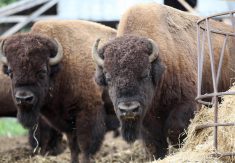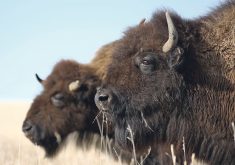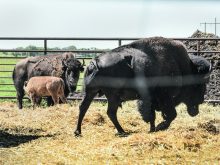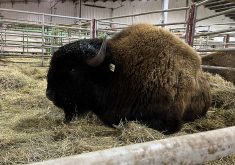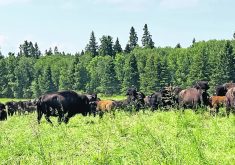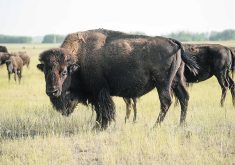Native species missing | Visitors will see and learn about Plains bison
Canadian bison producers are among those who support a proposal to see a wild, free-roaming herd of bison introduced in Banff National Park.
Parks Canada released a draft plan earlier this month that proposes to introduce 30 to 50 Plains bison in less-travelled regions of the park. Public input into the plan is invited until Nov. 1.
“Banff National Park is certainly well known throughout the world, so any type of experience that exposes people to bison is good for bison conservation and it’s good for the bison industry,” said Canadian Bison Association executive director Terry Kremeniuk.
Read Also

Beef check-off collection system aligns across the country
A single and aligned check-off collection system based on where producers live makes the system equal said Chad Ross, Saskatchewan Cattle Association chair.
Bison producers were part of Parks Canada’s consultation, along with other stakeholders in the pilot project.
Returning bison to an area that was once native range is also an advantage, said a plan proponent.
“Bison are a native species to the Banff National Park area and they’ve been missing as a wild animal for about 150 years, but they were in the park for a long time in enclosures. It’s time to bring them back into the wild,” said Harvey Locke, a spokesperson for Bison Belong, which is promoting the plan.
The enclosed bison paddock was removed in 1997 because of Banff town site development and concerns over wildlife movement, said Locke.
Public response to the idea has been positive, he added. The main concerns voiced so far include public safety and keeping the animals within the park.
Locke said he thinks the safety concern stems from the novelty of bison in Banff. Six other national parks in the western region also have bison and public safety has not been an issue, although they must be treated with the same caution as other wild animals.
“Parks Canada knows as much about managing bison as anybody in the world. They’ve been at it for their whole existence,” he said.
As for containment, the park is vast and mountains form natural boundaries. Forest provides a large buffer zone from the nearest ranches.
Young females who calve in an area tend to bond to that area, limiting their instinct to roam. No continuous fencing is proposed, but some fences will be necessary, of the type that allows other livestock to go over or under.
Grass in the park’s backcountry is considered ample, according to the draft report. A disease-free herd from Elk Island National Park will furnish the initial herd at Banff.
The draft plan, which involves a five-year pilot project, notes that bison lived in the park area historically and are thus part of its natural ecosystem. Herd grazing maintained the meadows and grasslands needed by other animals, birds and plant species.
“Successfully restoring this keystone species in the modern world will foster new and enrich existing opportunities for visitors, neighbours and the public at large to learn about and join Parks Canada in the reintroduction journey,” said the plan.
It also notes the role bison played in First Nations culture.
“Restoring bison to the landscape is an opportunity to restore cultural connections that have been lost for more than a century.”
Locke said he thinks the decision has been made to proceed with the pilot project, after revisions are made based on public consultation and a budget is established.
Bill Hunt, Parks Canada’s manager of resource conservation, was not available for comment by deadline on this story.






